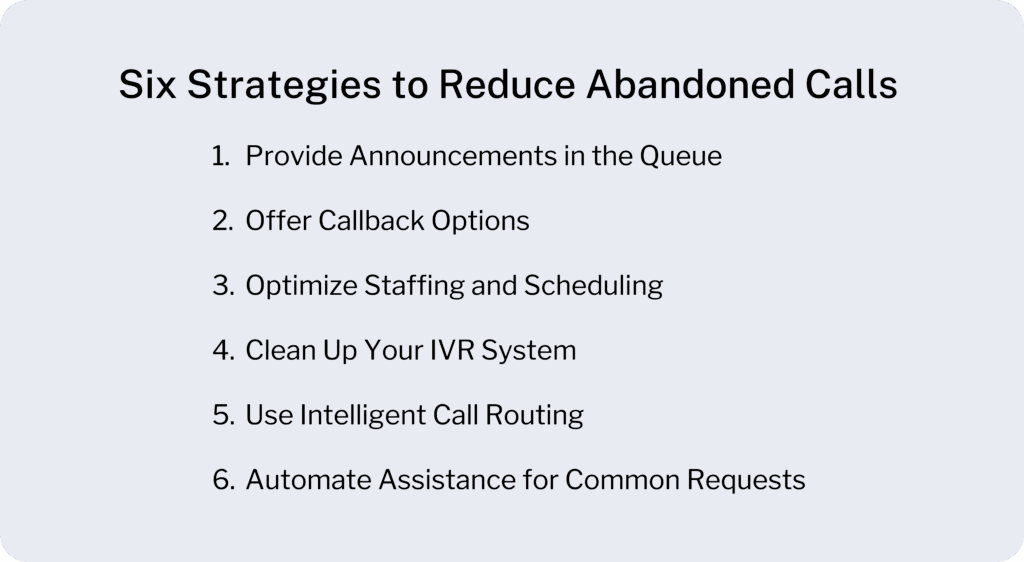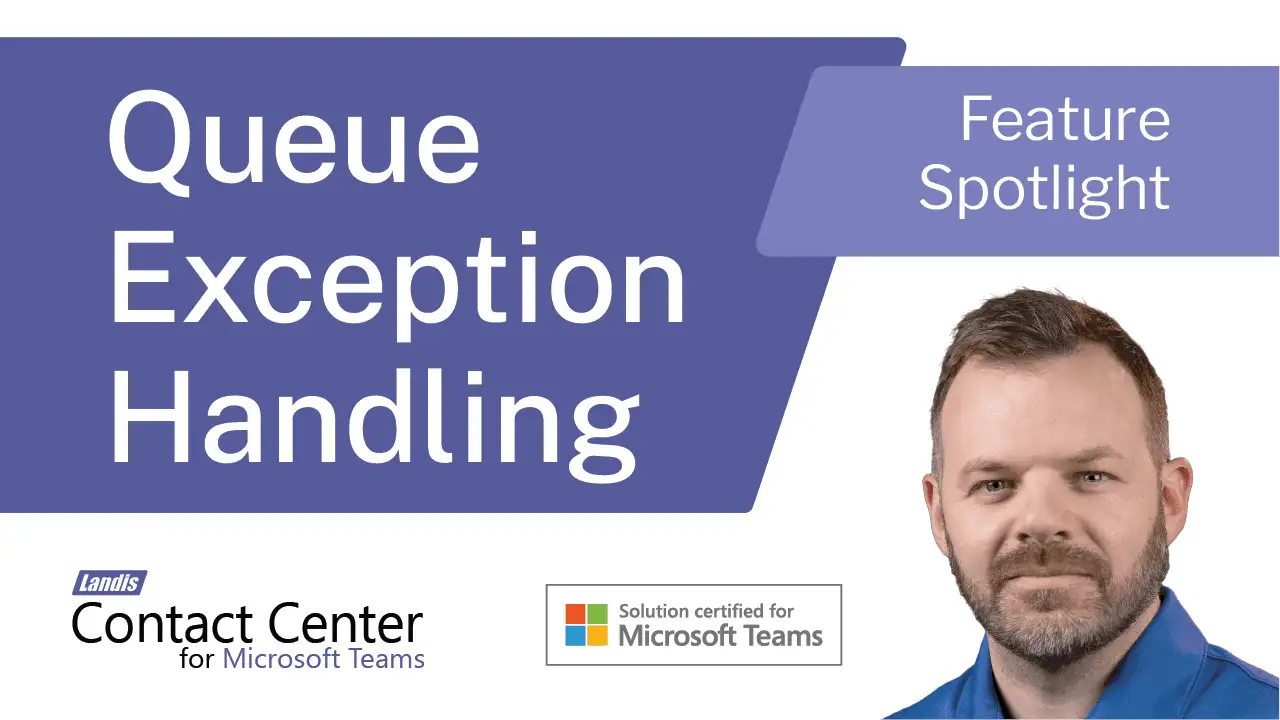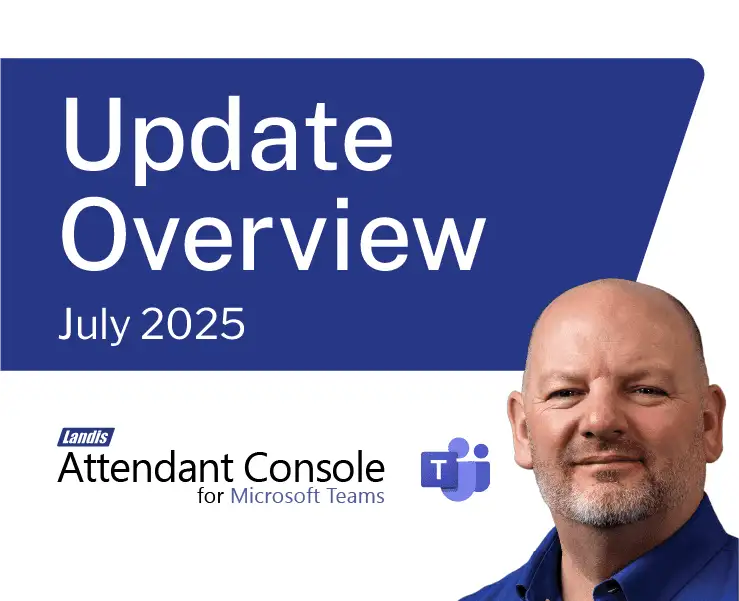Every abandoned call report in the contact center is frustrating, but behind that is an even more frustrated caller who has a growing dissatisfaction with your business. In this post, we’ll look at some tips for reducing call abandonment.
What is Call Abandonment Rate?
Call abandonment rate measures the percentage of callers who hang up before speaking to an agent.
Call Abandonment Rate = (Abandoned Calls ÷ Total Calls) × 100
Although rates vary by industry, acceptable call abandonment rate standard benchmarks show that healthy rates typically fall between 2-5%, and many averages are between 5-8%. Call abandonment rates above 8% need attention.
What counts as an abandoned call?
An abandoned call is when a caller hangs up before speaking with a live agent. Usually “short abandons” occurring within the first 10-20 seconds are excluded since these are often misdials or wrong numbers rather than frustrated customers.
Why do callers abandon calls?
Six of the most common reasons customers abandon calls are:
- Unclear wait times
- No callback option
- Long wait times
- Confusing menus
- Poor call routing
- Lack of self-service options
Below, we’ll look at six tips for reducing call abandonment that address each of these caller pain points.

How to Reduce Call Abandonment
1. Provide Announcements in the Queue
Caller pain point: Long, unexplained hold times and uncertainty about the remaining hold time.
Solutions
- Position in queue announcements telling callers their place in line or the number of callers ahead of them.
- Wait time estimates providing an expectation of the remaining time until the next agent is available.
- Hold messages keeping callers engaged. Share helpful information, company updates, or self-service options.
2. Offer Callback Options
Caller pain point: The caller’s own productivity is put on hold while being stuck in a queue.
Solutions
- Callback requests let callers opt out of holding without losing their place. When an agent becomes available, they can call them back.
- Proactive follow-up for abandoned calls using real-time notifications. When calls are abandoned after a certain threshold, agents receive a notification and can immediately call back to resolve the issue.
3. Optimize Staffing and Scheduling
Caller pain point: Long wait times and possibly being transferred again after waiting.
Solutions
- Historical data analysis for forecasting reveals patterns in call volume. Track when your busiest periods occur – Monday mornings, end-of-semester periods, or specific times of day, and use this data to schedule accordingly.
- Cross-training for flexibility enables agents to handle multiple types of inquiries. When call volume spikes in one area, you can redirect qualified agents from other departments rather than watching abandonment rates climb.
- Real-time staffing adjustments respond to unexpected changes. Monitor your queues throughout the day and make staffing changes as needed.
4. Clean Up Your IVR System
Caller pain point: Confusing IVR menus
Solutions
- Simplify menu options to 3-4 choices maximum per level. Too many options create decision paralysis.
- Easy path to human agents should always be available. Don’t force callers through multiple menu levels just to reach a person.
5. Use Intelligent Call Routing
Caller pain point: Calls reaching wrong agents or departments
Solutions
- Skills-based routing matches callers with agents who have the right expertise.
- Priority queues for VIP customers give special treatment to high-value accounts or urgent situations.
- Overflow management tactics handle volume spikes gracefully. When your primary queue fills up, route calls to backup agents, other departments, or callback queues rather than letting calls time out and become unanswered.
6. Automate Assistance for Common Requests
Customer pain point: No self-service options.
Solutions
- Self-service voice menus use AI to handle routine inquiries automatically. Let callers check account balances, payment due dates, or basic information without agent involvement.
- Automated status updates provide instant access to common information like enrollment status, financial aid disbursement dates, or account holds.
- Integration with existing systems makes automation more powerful. When your IVR can pull data from student information systems or CRMs, callers get accurate, up-to-date information instantly.
Transform Your Contact Center with Landis
Landis offers several unique features to help with tracking and reducing call abandonment.
Granular abandoned call reports provide detailed insights into individual caller behavior, hold times, and patterns to distinguish between repeat callers and one-time issues.
Time-based analytics report on queue calls by hour to identify peak abandonment periods.
Abandoned call alerts through webhook notifications can send an instant notification when calls are abandoned after specific thresholds.
All of these strategies become much easier to implement when you have the right platform supporting them. Landis Contact Center for Microsoft Teams brings every abandonment-fighting feature directly into the interface your agents already know and trust.
Ready to see these strategies in action? Book a demo of Landis Contact Center and discover how to turn your challenges into advantages.




